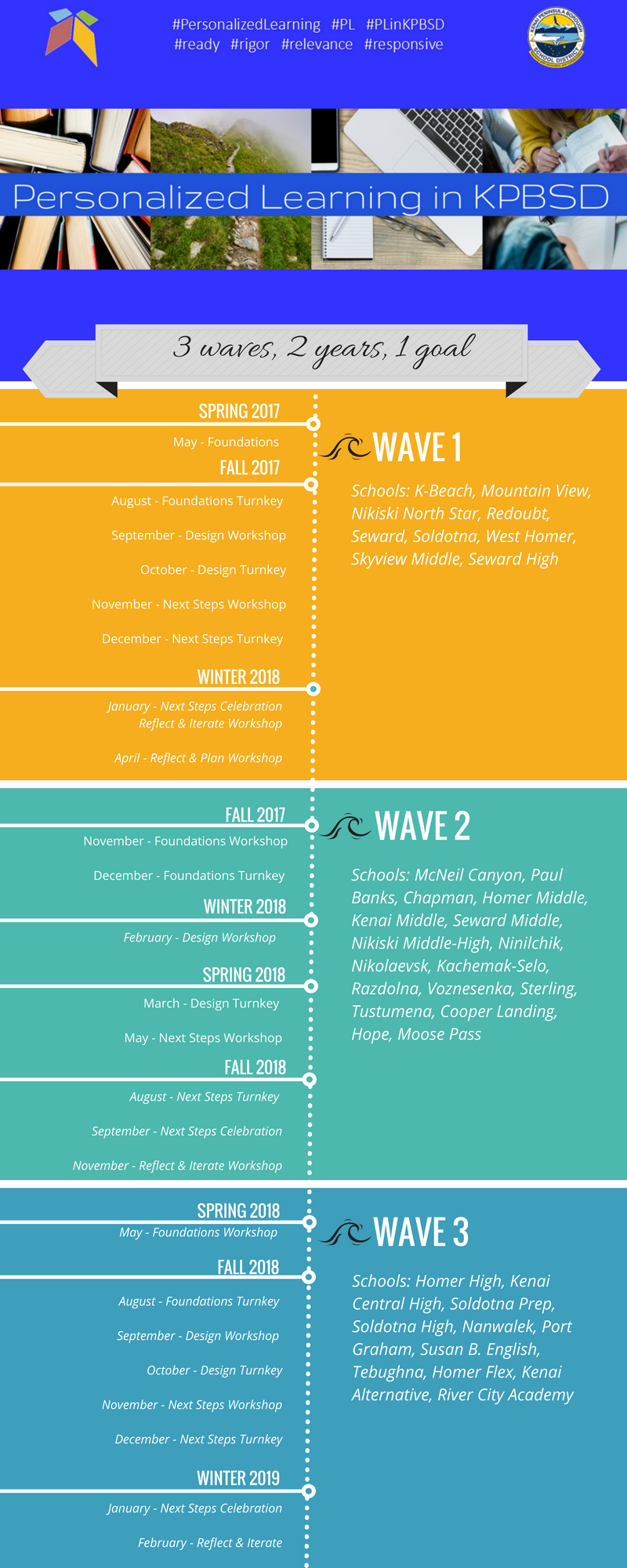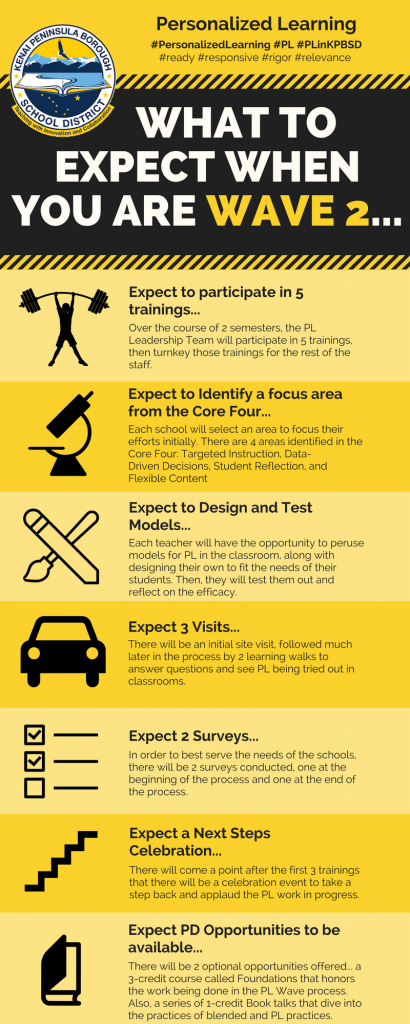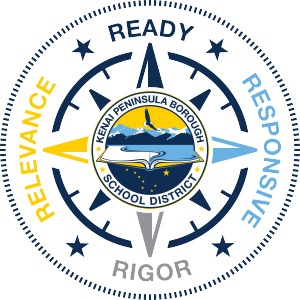We have formally been on the Personalized Learning (PL) journey for a complete school year and are now entering year two. And with the new school year, it is important to take a moment to consider where we have come from. Exceptional teachers are the standard in KPBSD, but over the course of the last year, teachers were offered opportunity to participate in building a culture of sustainable and continuous innovation on an unprecedented district-wide scale. With the development of the new 5-year strategic plan, there have been bold expectations put in place that drive the work that we do. The implementation of that plan has consisted of focused and vigorous engagement at all levels across the school district machine. As evidenced by the results of the Spring Survey conducted by Education Elements, our schools are exceeding benchmark standards in the PL implementation process.
So what does year two of Personalized Learning look like for KPBSD? Our schools are divided into three groups, or waves. This is done to not only make the training procedure manageable, but also to allow for a spiraling effect as the later waves benefit from the experiences of the practitioners who started earlier. As a result, each wave is in a different stage of exposure to personalized learning.
![]()
Wave 1 has completed their initial workshop series with Education Elements. They will spend this year really honing in on building school cultures of innovation and sharing. The central focus of that work is utilizing a model of continual improvement through building school practices that call for this enriching kind of engagement. This includes very intentional use of professional development and staff meeting time, as well as, spending time in each other’s classrooms in order to grow our capacity to engage in continuous professional learning.
![]()
Wave 2 is midway through their work with Education Elements. This Fall brings more workshops and implementation of PL strategies formally to the classrooms. Much of their workshop time will be reflecting on the PL practices and planning for continual iteration (or updating) as they continue to build their PL practices. The Spring will bring the shift toward the building of innovative school culture work that Wave 1 is working on.
![]()
Wave 3 is an assembly of our district’s high schools, larger middle schools, fly-in schools, and alternative schools. They formally began their work with Education Elements in May as their leadership teams attended their first workshop. This wave will spend the year moving through the series of workshops with Ed Elements and implementing their first PL strategies formally in the Spring.
KPBSD educators are honing our craft with depth like never before and with eyes toward continual growth and innovation. There is excitement in the air as the district moves ever closer toward having the capacity to meet every student where they are, offer them the flexibility they need, and include them in the designing of their learning experience!
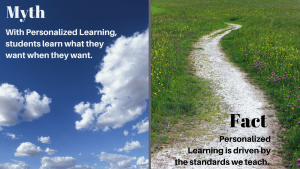 over what they study. This is not the case at all. In fact, teachers are bound more than ever to the foundational skeleton of the content areas: The standards! The
over what they study. This is not the case at all. In fact, teachers are bound more than ever to the foundational skeleton of the content areas: The standards! The 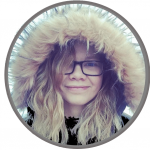 “The first step to be innovative within the confines of parameters such as standards is to understand the parameters deeply. State Standards are an essential basis for education. Without standards, educators would have no framework for what their students need to know at specific levels in order to prepare them for the next levels. Think of utilizing standards like you would learn a sport. When someone learns a skill in a sport there are foundational skills that a player needs to have before they are able to progress and play the sport as a whole. To learn these skills they practice them slowly and perfectly hundreds of times to create muscle memory. Teachers create muscle memory with the standards. When a teacher knows the standards deeply they do not have to look at them every time they create a lesson that is innovative and creative. They create lessons that address the standards automatically because they have muscle memory, they have become automatic. Of course (just like in sports) it is important to refresh every now and then just to make sure you are on the right track.
“The first step to be innovative within the confines of parameters such as standards is to understand the parameters deeply. State Standards are an essential basis for education. Without standards, educators would have no framework for what their students need to know at specific levels in order to prepare them for the next levels. Think of utilizing standards like you would learn a sport. When someone learns a skill in a sport there are foundational skills that a player needs to have before they are able to progress and play the sport as a whole. To learn these skills they practice them slowly and perfectly hundreds of times to create muscle memory. Teachers create muscle memory with the standards. When a teacher knows the standards deeply they do not have to look at them every time they create a lesson that is innovative and creative. They create lessons that address the standards automatically because they have muscle memory, they have become automatic. Of course (just like in sports) it is important to refresh every now and then just to make sure you are on the right track. 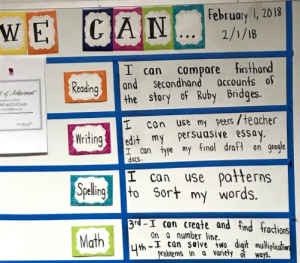 on their walls. An “I can” statement is the standard that you are trying to teach put into student-friendly and actionable language. For example, the Alaska State Standard says, “ Add up to four two-digit numbers using strategies based on place value and properties of operations.” The “I can” statement for this is “I can add double digits. I can name the place a number is in. I can tell if it is addition or subtraction.” The student knows exactly what they are trying to accomplish!
on their walls. An “I can” statement is the standard that you are trying to teach put into student-friendly and actionable language. For example, the Alaska State Standard says, “ Add up to four two-digit numbers using strategies based on place value and properties of operations.” The “I can” statement for this is “I can add double digits. I can name the place a number is in. I can tell if it is addition or subtraction.” The student knows exactly what they are trying to accomplish! 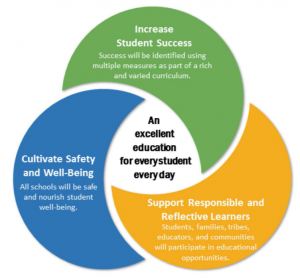
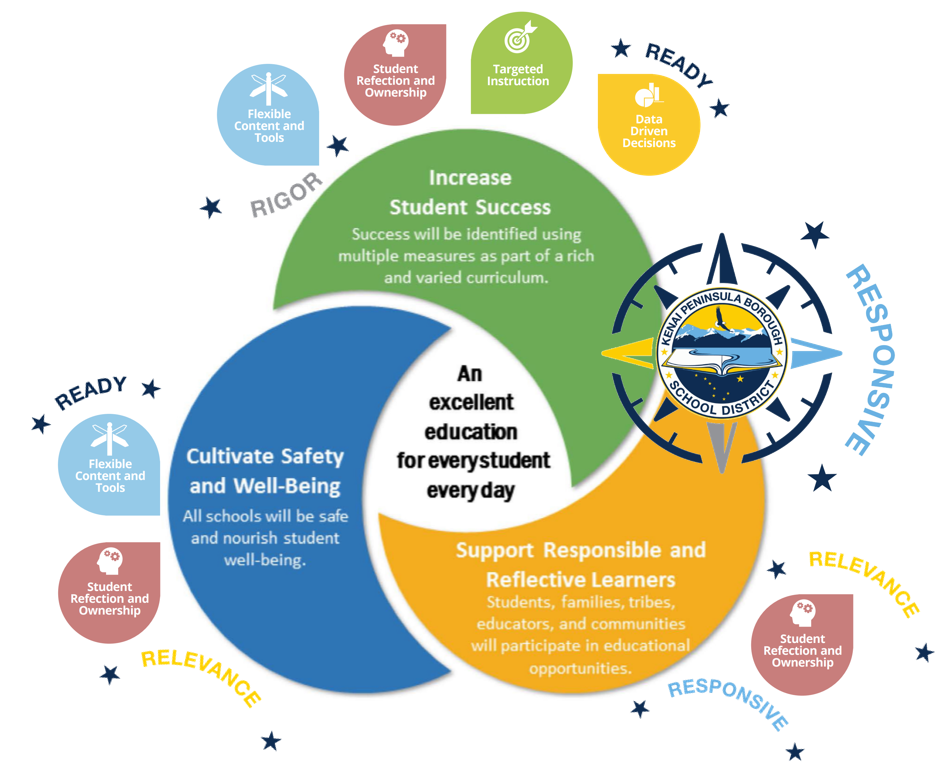
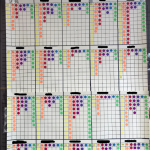
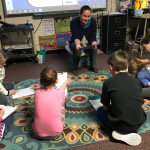
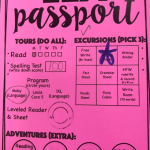
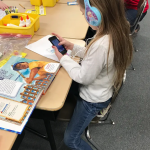
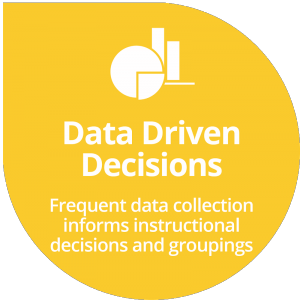
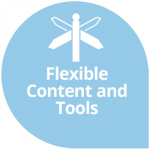
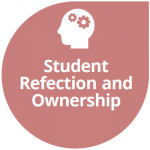 Student Reflection and Ownership means that we are continually asking students to reflect on their learning and take active ownership for their educational choices. Additionally, it means that students are learning to think more about their choices, that we are offer them opportunity for choice in their learning, and that student designed goals and direction are supported.
Student Reflection and Ownership means that we are continually asking students to reflect on their learning and take active ownership for their educational choices. Additionally, it means that students are learning to think more about their choices, that we are offer them opportunity for choice in their learning, and that student designed goals and direction are supported.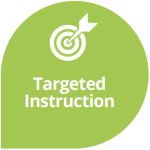
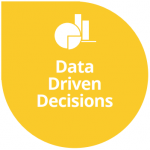 Data Driven Decisions means that we frequently collect data to inform instructional decisions and student groupings. It also means that we use data purposefully, both at the student and teacher level, that we use formative (as you go) assessments to inform our decisions, and that we are developing a culture of openness toward use of data and feedback.
Data Driven Decisions means that we frequently collect data to inform instructional decisions and student groupings. It also means that we use data purposefully, both at the student and teacher level, that we use formative (as you go) assessments to inform our decisions, and that we are developing a culture of openness toward use of data and feedback.